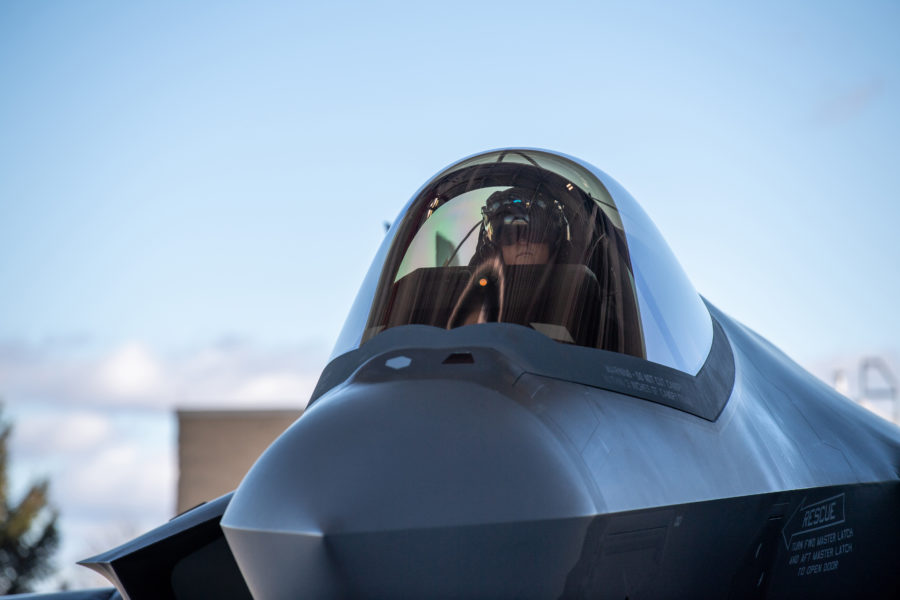The Air Force would prefer to put new engines from its Adaptive Engine Transition Program into the F-35A, but whether that can be done affordably may depend on Navy participation, said Air Force Secretary Frank Kendall during AFA’s Air, Space & Cyber Conference on Sept. 20.
“We’d very much like to continue the program that advances engine technology,” Kendall said. “We’ve had some pretty good success there.” But the Navy, a participant in the effort, is still on the fence. “It’s not clear that they will be going forward,” Kendall said, adding that he’s “already having discussions with the Secretary of the Navy about that.”
The head of the F-35 Joint Program Office, Air Force Lt. Gen. Eric T. Fick, told reporters last week that if the service wants the AETP engine, it will have to bear the full cost of its development and integration because the engine won’t fit in the F-35B and may not fit in the Navy’s F-35C carrier-landing model, either. The F-35 partners—the Marine Corps, Navy, allied countries, and foreign military sales customers—have all agreed that “you have to pay to be different” on the program, which aims for high commonality as a cost-saving measure, Fick said.
If the Air Force goes for a new engine, that would sharply increase operating costs, Fick said, because the fleet sustainment enterprise would have to support at least two engines, with different parts and associated equipment.
The House Armed Services Committee, in its National Defense Authorization Act language for fiscal year 2022, mandated that the JPO develop a plan for integrating AETP engines on the F-35 starting in 2027.
The AETP technology has great appeal, Kendall said, because of the “fuel savings and thrust increase we can get” from it. Contractors have said the engines could yield as much as a 30 percent savings in fuel.
GE Aviation is developing the XA100 engine, and Pratt & Whitney is developing the XA101, each of which has a third airstream that allows for greater thrust and better efficiency in cruise, as well as greater cooling capability, and, potentially, better infrared stealth.
“I’m hoping we’ll be able to go forward together,” Kendall said of the Navy’s participation. “If we have to, we’ll look hard at the affordability of going forward” as a single service, “just as we have on the rest of the program. But those advantages are substantial. And I’d like to be able to pursue them if it’s affordable.”
Kendall also said he’s skeptical the F-35’s sustainment costs can get down to “the kinds of numbers we’ve been talking about,” which the Air Force has pegged at $25,000 per flying hour by 2025. He said he plans to do a “deep dive” on the program in the coming months to see what kinds of operating costs are really achievable.
The F-35 JPO awarded Lockheed Martin sustainment contract last week that could set the stage for a performance-based logistics arrangement in the mid-2020s if the company shows significant progress in containing F-35 sustainment costs.
